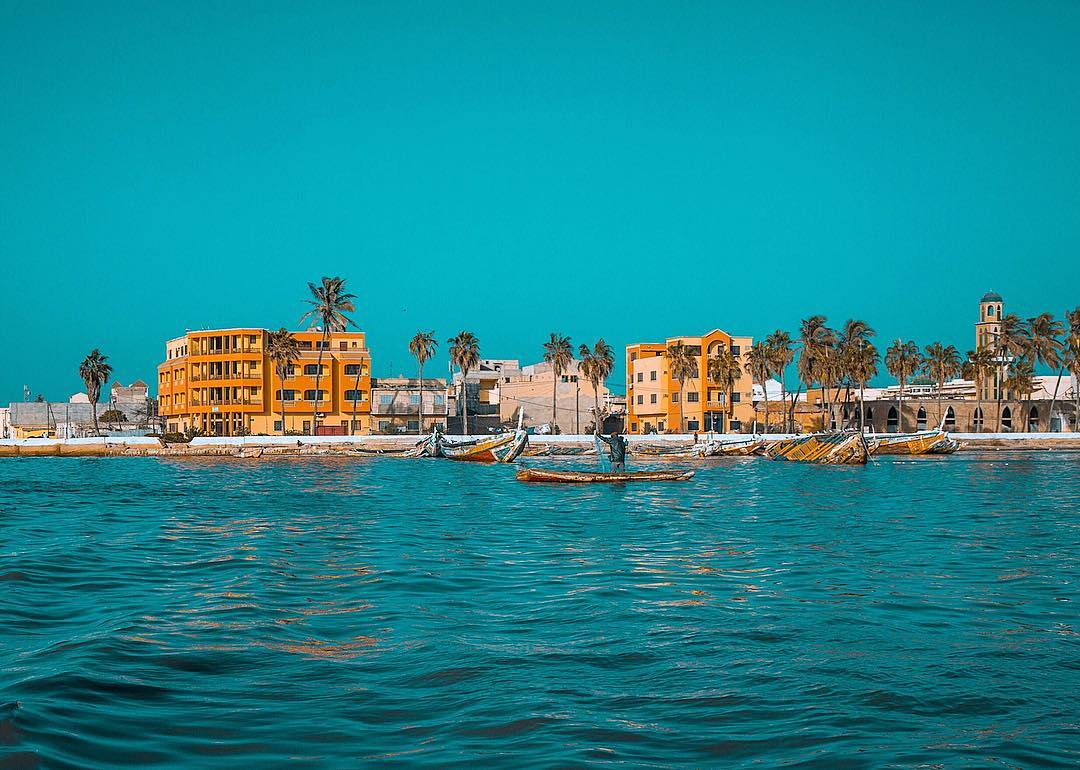MUST-SEE PLACES IN SAINT-LOUIS SENEGAL

Located 292 km from Dakar and 193 km by road from ThièsSenegal's Saint-Louis region is home to the country's most northerly region. It is the country's sixth-largest city and third-largest seaport. In 2003, it was overtaken by the city of Mbour. Located on the island of N'Dar, upstream from the mouth of the Senegal River, Saint-Louis is less than a hundred kilometers from the Mauritanian border.
One of the best ways to discover the charms of Senegal is to immerse yourself in the beautiful nature of the Saint-Louis Region. Also known as the Ndar Region, this beautiful, world-renowned region brings out the best in tourists when they visit.
It's a great place to get lost in, knowing that no matter where you turn, you'll be charmed by the natural beauty it abounds in. This is a region where time slows down and life is more about experiencing nature and its history.
Dakar with its real estate The growing city can sometimes be a stifling place, which is why it's a good idea to escape and visit Saint-Louis and its many charming spots.
Outdoor enthusiasts will want to stop off at the HYDROBASE BEACH
and soak up the natural beauty.
After giving the towns their due, get out of town. Visit the GUEMBEUL RESERVE. Less adventurous visitors may find a visit to the CRDS more to their liking.
Plan your visit with our list of top attractions in the Saint Louis Region.
What are the places to visit in Saint-Louis?
THE GUEMBEUL RESERVE

Created in 1983 to protect wildlife, this jewel of a park is located 5 km south of Saint-louisnot far from Highway 2. A sumptuous 720-hectare park, with a 200-hectare lake and open green spaces, furrowed tortoises, dama gazelles, dama onyx, hare, and warthogs, is a reserve classified by the Convention on the Conservation of Migratory Species of Wild Animals. Ramsar. Many birds can be seen soaring overhead, with countless species numbering up to 200. Thanks to these resting and nesting places, the observation of grey and white pelicans, gulls, youyous and pink flamingos will leave you speechless.
LANGUE DE BARBARIE NATIONAL PARK



A trip to the river is one of the most popular better ways of living saint-louisian life. There are few places in the world quite like the Barbary tongueA guided tour of this 30-kilometre-long surface is guaranteed to be an unforgettable experience.(For a pirogue excursion : (Sahel Découverte St Louis). Part of one of Senegal's 6 national parks, the Langue de Barbarie National Park is an ornithological reserve made up of dunes that are home to a variety of plant species. filaosThe area is home to a wide variety of wild animals in their natural habitat. From April to October, we can see many birds migrating to this site. One extract of the planete senegal website shows that the park is now on borrowed time. To supposedly combat the risk of flooding in Saint-Louis, a 4-meter breach was opened on October 3, 2003 in the middle of the Langue de Barbarie. The breach widened by 200 metres in just three days! Six months later, an 800-metre gaping hole let in the waters of the Senegal, becoming the river's new mouth?
THE MUSEUM OF THE RESEARCH AND DOCUMENTATION CENTER OF SENEGAL (CRDS)

We have already visited the Guembeul and the Langue de Barbarie national park, but the town of Saint-louis has much more to offer. the CRDS is a wonderful place to spend a few hours revisiting the country?s history. The thing we love most about the museum CRDSis that it should be dedicated to local researchers. It was created 17 years before Senegal?s independence, a period when Senegal was still a colony of France. Many of its exhibits date back to prehistory and history, and feature ethnographic, folk art and natural environment collections. These art exhibitions bring Senegalese history to life in a different way, with paintings, drawings and sculptures.
THE HYDROBASE BEACH


Only 15 minutes from CRDSThe Plage Hydrobase in Saint-Louis offers a beautiful white sand beach. A quiet beach, a perfect escape from the noise of the city and other crowded beaches on the coast. The alsurroundings on this beach are less populated and offers a small selection of seafood grills and sandwich bars for visitors and visiting fishermen. Visitors will also find cheap house and room rentals for weekend trips and other vacations. If you don?t have a car and want to get there, you can take a cab to and from the site.
THE JEAN MERMOZ MUSEUM


Many people visit Saint-Louis, but miss the chance to explore the Museum. Jean Mermoz to discover the story of this great man and his idols like Saint d?Exupéry. The museum is a reminder of Jean Mermoz's time in Senegal. The early days of aviation are presented, mainly describing Jean Mermoz?s life as a pilot. Numerous photos and historical documents decorate the museum walls. Jean Mermoz, a monument to l?Aéropostale and founder of the French Social Party, disappeared in the Atlantic Ocean on December 7, 1936. In those days, Saint-Louis was a key stop on the air route from Europe to South America, and the embarkation point for the arduous flight over the Atlantic to Brazil. This museum is a must for anyone wishing to revisit the history of the pilot.
DJOUDJ NATIONAL BIRD PARK, THE WORLD'S 3RD LARGEST ORNITHOLOGICAL RESERVE



The National Bird Park of Djoudj (PNOD)classified as a world heritage by UnescoThe park is one of Senegal's great wildlife refuges. The park is located around sixty kilometers from our St-Louis region, in the Senegal River delta. It covers an area of 16,000 hectares and is visited by some 100 species of birds. Among these species, we will mention some: flamingos and spoonbills, crowned cranes, ospreys, vultures, etc. oricouArabian bustards, egrets, Gambian geese, grey herons, cormorants, kingfishers, jacanasmarabouts and black storks extract. A must for anyone interested in nature conservation. The massive colony of grey pelicans and wading birds is one of the park?s main attractions. The park is also home to red monkeys, monitor lizards, warthogs, crocodiles and more.

